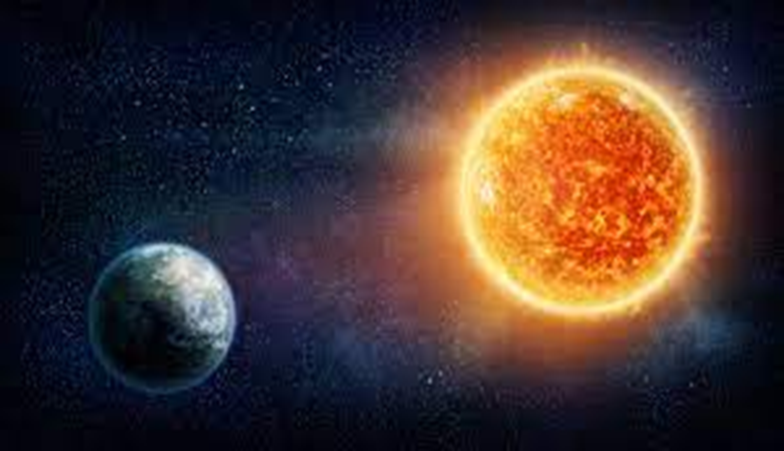!The closest black hole to Earth may be even closer than we thought

Open star clusters are groups of 100 to 10,000 stars born at almost the same time following the gravitational collapse of a molecular cloud. They contain young stars, some of which are massive and which should end their lives as stellar black holes. Data from ESA's Gaia satellite interpreted based on numerical simulations of the motion of stars in the Hyades cluster suggest that it may contain several black holes. These would be the closest known, just 150 light years from the Sun.
In 1964, an X-ray detector, in this case in the form of a Geiger counter, flew into the cosmos aboard a sounding rocket launched from White Sands Missile Range in New Mexico. We were then still at the dawn of the development of X-ray astronomy which had begun around 70 years ago when a V2 rocket carried a detector to observe the Sun's radiation in this wavelength band.
X-rays being easily stopped by the atmosphere (but not by the interstellar medium, X-rays with wavelengths less than one nanometer can pass right through the Milky Way), we knew that we could not observe this radiation predicted theoretically from the determination of the very high temperature of the plasma of the solar corona (106 K) without leaving the atmosphere.
This time, among the X-ray sources discovered by the sounding rocket, we find Cygnus X1. Astrophysicists focus on its case from the year 1970 with the launch of Uhuru (“freedom” in Swahili), named so to thank Kenya which hosted in its continental waters the platform from which the satellite was launched. December 12, Kenya's independence anniversary.
Black holes are among the most opaque objects in the Universe. Fortunately, however, they are among the most attractive, and it is through their disproportionate power of attraction that we can detect them. Giant black holes are the most monstrous ogres in the cosmic zoo, but they are not weapons of mass destruction. The jets of material they produce would have helped light up the first stars and form the first galaxies. Hubert Reeves and Jean-Pierre Luminet, specialists in contemporary cosmology, answer all your questions. To find out more, visit the site From the big bang to life.
From black hole X-rays to the movements of Gaia
A few years later, based on these observations, researchers suggest that Cygnus X1 is in fact a double system with a star feeding the accretion disk of a black hole whose mass is estimated between 7 and 13 solar masses, or even around 20. It is then the first serious candidate for the title of stellar black hole and several will be found in the Milky Way in the decades to come.
Cygnus launched.

The latest record to date is perhaps that of a stellar black hole whose existence is suggested by astrometric observations provided by ESA's Gaia satellite, without the use of X-rays.
It would be only 150 light years from the Sun in the famous and young open star cluster of the Hyades.
If this is the case, it is much closer than the last record holder, also detected with Gaia and which was naturally called Gaia BH1 (black hole is Black Hole, in English). Recent observations confirmed that it would contain around 10 solar masses and that it would be around 1,600 light years from Earth in the direction of the constellation Ophiuchus, as Futura explained in two previous articles where it was even mentioned Gaia BH2, about 3,800 light years from us, in the direction of Centauri.
In fact, as explained in an article published in Monthly Notices of the Royal Astronomical Society and of which an open access version exists on arXiv, it would not be just one, but several stellar black holes whose presence would be betrayed by the study by astrometry of the movements of the Hyades stars.
The European satellite Gaia, which scans billions of stars in the Milky Way to precisely know their distances and also their movements, takes us to discover a swarm of very young stars close to our Solar System: the Hyades. Drawing the head of the Taurus constellation, we can see here in 3D how this star cluster is structured and what it will become in the future.
2 to 3 stellar black holes 150 light years away?
A group of scientists led by Stefano Torniamenti, from the University of Padua (Italy), with the participation of Mark Gieles, astrophysicist at the Institute of Cosmos Sciences of the University of Barcelona (ICCUB) and the Institute of space studies of Catalonia (IEEC), and Friedrich Anders (ICCUB-IEEC) had first started by carrying out scholarly simulations of the movements of these stars, taking into account all those which were visible.

But the movements did not match the observations made with Gaia... except to imagine the hidden presence, because they do not emit X-rays like Cygnus X1, of several black holes (2 to 3) of stellar masses currently present in the cluster, but which could also have been ejected very recently (less than 150 million years ago, or approximately the last quarter of the age of the cluster), although having left indirect traces that are still notable their existence in the movements of the stars of the cluster.
“Our simulations can only simultaneously correspond to the mass and size of the Hyades if black holes are present at the center of the cluster today (or until recently),” explains Stefano Torniamenti in a press release from the Universitat de Barcelona.

His colleague Mark Gieles adds: “This observation helps us understand how the presence of black holes affects the evolution of star clusters and how star clusters in turn contribute to the sources of gravitational waves. These results also give us insight into how these mysterious objects are distributed across the galaxy. »
Source: websites

